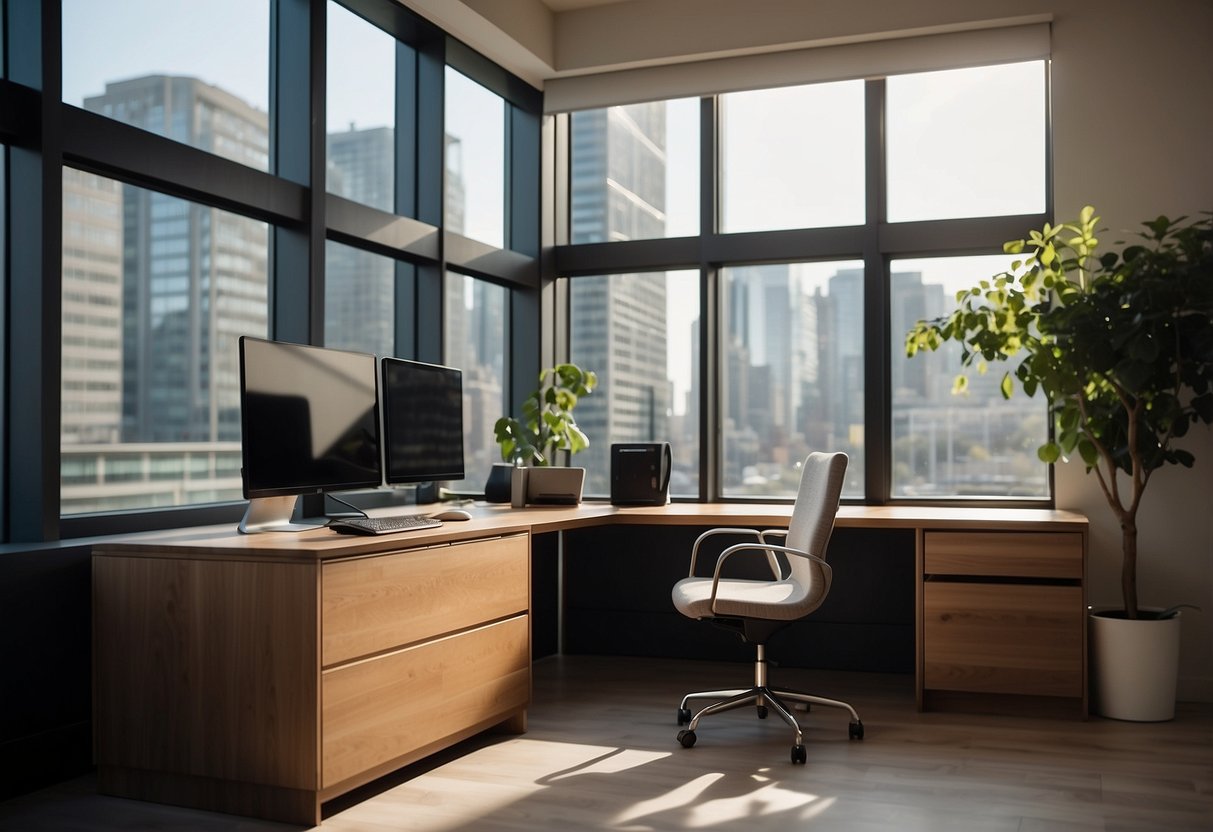Creating a Functional and Stylish Home Office: Top Design Tips and Ideas
Implementing Efficient Storage Systems
Incorporate modular shelving units and cabinets that provide flexibility. Adjustable shelves allow for customization based on changing needs. Drawers with dividers help organize office supplies, making them easily accessible. Consider vertical storage solutions to maximize space without overcrowding. Floating shelves and wall-mounted organizers can keep essential items within reach while maintaining a clean desk surface. Use labeled bins and baskets to sort documents and reduce visual clutter.
Technological storage solutions also play a crucial role. Invest in a good quality filing cabinet for physical documents. For digital files, utilize cloud storage and external hard drives to keep electronic data secure and organized. Cable management systems prevent tangling and improve the aesthetics of the workspace.
Decluttering Strategies
Adopt a minimalistic approach to reduce unnecessary items. Regularly assess the necessity of each item in the office. Dispose of or donate items that are no longer needed. Keep only the essential tools and documents within arm’s reach, storing others away in designated spots.
Establish a daily routine to clear the desk at the end of the day. Sort through incoming documents immediately, filing or scanning them to avoid pile-ups. Create a designated spot for everyday items like stationery, files, and gadgets to ensure they are always returned to their place after use.
Use multi-functional furniture to save space. Desks with built-in drawers or shelves serve dual purposes, reducing the need for extra furniture. Keeping the workspace clean and organized promotes efficiency and fosters a calm working environment.
Technology Integration

Technology integration is critical for both functionality and aesthetic appeal in a home office. It involves selecting the right devices, managing cables, and incorporating smart features seamlessly.
Essential Tech for a Home Office
In a home office, having the right technology is essential for productivity. A reliable computer is a must, whether it’s a desktop or a laptop, depending on the nature of the work. High-speed internet is another non-negotiable, ensuring smooth video calls and fast data transfers.
Monitors are also important. Dual monitors can enhance multitasking abilities. An ergonomic keyboard and mouse can help maintain comfort during long hours. Additionally, a high-quality printer/scanner can be beneficial for handling documents. Noise-canceling headphones can help minimize distractions.
Consider a good webcam for clear video communications and smart lighting controlled via apps to optimize your workspace’s brightness and ambiance.
Cable Management Techniques
Managing cables effectively is crucial for maintaining a tidy workspace. Start by identifying and labeling all cables to know which device they belong to. Use cable ties and clips to bundle cables together and keep them out of the way.
Desks with built-in cable management systems can help hide wires. For additional solutions, consider cable sleeves or raceways, which can conceal cables along walls or under desks.
Using wireless devices like a mouse, keyboard, or speakers can reduce the number of cables. Velcro straps can also be useful for bundling and securing wires.
Smart Home Features
Incorporating smart home features can elevate a home office. Smart speakers like Amazon Echo or Google Home can play music, set reminders, and control other smart devices via voice commands.
Smart thermostats can maintain a comfortable temperature, adapting the environment to enhance productivity. Smart plugs and lighting can be scheduled and controlled remotely, allowing for flexibility and energy conservation.
Setting up a smart security system can protect office equipment and sensitive information. These systems can include smart locks, cameras, and sensors controlled via smartphone apps. This not only secures the workspace but also integrates smoothly with the home environment.



